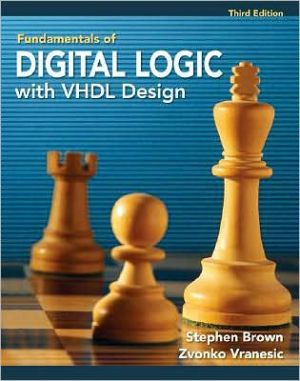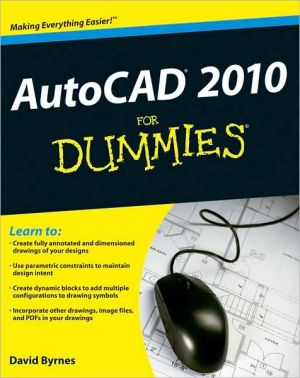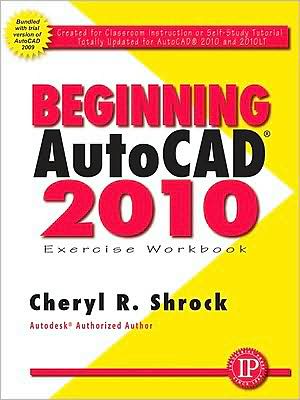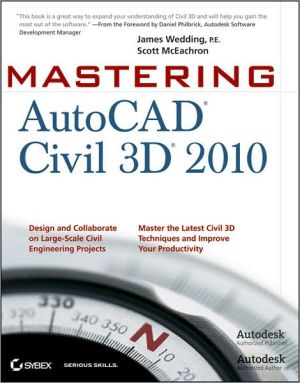Fundamentals of Digital Logic with VHDL Design with CD-ROM
Fundamentals of Digital Logic with VHDL Design teaches the basic design techniques for logic circuits. The text ptovides a clear and easily understandable discussion of logic circuit design without the use of unnecessary formalism. It emphasizes the synthesis of circuits and explains how circuits are implemented in real chips. Fundamental concepts are illustrated by using small examples, which are easy to understand. Then, a modular approach is used to show how larger circuits are designed.\...
Search in google:
This book is intended for an introductory course in digital logic design, which is a basic course in most Electrical and Computer Engineering programs. The authors provide a desirable balance between classical and modern design approaches. Basic concepts are introduced using simple logic circuits, which are designed by using both manual techniques and modern CAD-tool-based methods. Having established the fundamental concepts, more complex, realistic circuits are then designed with the CAD tools. The IEEE standard VHDL language is an integral part of design techniques used throughout the book. Altera's advanced Max plus II CAD systmem (on CD-ROM0 and a series of step-by-step tutorials are included.
Chapter 1: Design Concepts\ This book is about logic circuits-the circuits from which computers are built. Proper understanding of logic circuits is vital for today's electrical and computer engineers. These circuits are the key ingredient of computers and are also used in many other applications. They are found in commonly used products, such as digital watches, various household appliances, CD players, and electronic games, as well as in large systems, such as the equipment for telephone and television networks.\ The material in this book will introduce the reader to the many issues involved in the design of logic circuits. It explains the key ideas with simple examples and shows how complex circuits can be derived from elementary ones. We cover the classical theory used in the design of logic circuits in great depth because it provides the reader with an intuitive understanding of the nature of such circuits. But throughout the book we also illustrate the modern way of designing logic circuits, using sophisticated computer aided design (CAD) software tools. The CAD methodology adopted in the book is based on the industry-standard design language called VHDL. Design with VHDL is first introduced in Chapter 2, and usage of VHDL and CAD tools is an integral part of each chapter in the book.\ Logic circuits are implemented electronically, using transistors on an integrated circuit chip. With modern technology it is possible to fabricate chips that contain tens of millions of transistors, as in the case of computer processors. The basic building blocks for such circuits are easy to understand, but there is nothing simple about a circuit that contains tens of millions oftransistors. The complexity that comes with the large size of logic circuits can be handled successfully only by using highly organized design techniques. We introduce these techniques in this chapter, but first we briefly describe the hardware technology used to build logic circuits.\ 1.1 Digital Hardware\ Logic circuits are used to build computer hardware, as well as many other types of products. All such products are broadly classified as digital hardware. The reason that the name digital is used will become clear later in the book-it derives from the way in which information is represented in computers, as electronic signals that correspond to digits of information.\ The technology used to build digital hardware has evolved dramatically over the past four decades. Until the 1960s logic circuits were constructed with bulky components, such as transistors and resistors that came as individual parts. The advent of integrated circuits made it possible to place a number of transistors, and thus an entire circuit, on a single chip. In the beginning these circuits had only a few transistors, but as the technology improved they became larger. Integrated circuit chips are manufactured on a silicon wafer, such as the one shown in Figure 1.1. The wafer is cut to produce the individual chips, which are then placed inside a special type of chip package. By 1970 it was possible to implement all circuitry needed to realize a microprocessor on a single chip. Although early microprocessors had modest computing capability by today's standards, they opened the door for the information processing revolution by providing the means for implementation of affordable personal computers. About 30 years ago Gordon Moore, chairman of Intel Corporation, observed that integrated circuit technology was progressing at an astounding rate, doubling the number of transistors that could be placed on a chip every 1.5 to 2 years.\ This phenomenon, informally known as Moore's law, continues to the present day. Thus in the early 1990s microprocessors could be manufactured with a few million transistors, and by the late 1990s it has become possible to fabricate chips that contain more than 10 million transistors.\ Moore's law is expected to continue to hold true for at least the next decade. A consortium of integrated circuit manufacturers called the Semiconductor Industry Association (SIA) produces an estimate of how the technology is expected to evolve. Known as the SIA Roadmap [1], this estimate predicts the minimum size of a transistor that can be fabricated on an integrated circuit chip. The size of a transistor is measured by a parameter called its gate length, which we will discuss in Chapter 3. A sample of the SIA Roadmap is given in Table 1.1. In 1999 the minimum possible gate length that can be reliably manufactured is 0.14 um. The first row of the table indicates that the minimum gate length is expected to reduce steadily to about 0.035 p m by the year 2012. The size of a transistor determines how many transistors can be placed in a given amount of chip area, with the current maximum being about 14 million transistors per cm 2. This number is expected to grow to 100 million transistors by the year 2012. The largest chip size is expected to be about 1300 mm 2 at that time; thus chips with up to 1.3 billion transistors will be possible! There is no doubt that this technology will have a huge impact on all aspects of people's lives.\ The designer of digital hardware may be faced with designing logic circuits that can be implemented on a single chip or, more likely, designing circuits that involve a number of chips placed on a printed circuit board (PCB). Frequently, some of the logic circuits can be realized in existing chips that are readily available. This situation simplifies the design task and shortens the time needed to develop the final product. Before we discuss the design process in more detail, we should introduce the different types of integrated circuit chips that may be used. that may be used.\ There exists a large variety of chips that implement various functions that are useful in the design of digital hardware. The chips range from very simple chips with low functionality to extremely complex chips. For example, a digital hardware product may require a microprocessor to perform some arithmetic operations, memory chips to provide storage capability, and interface chips that allow easy connection to input and output devices. Such chips are available from various vendors.\ For most digital hardware products, it is also necessary to design and build some logic circuits from scratch. For implementing these circuits, three main types of chips may be used: standard chips, programmable logic devices, and custom chips. These are discussed next.\ 1.1.1 Standard Chips\ Numerous chips are available that realize some commonly used logic circuits. We will refer to these as standard chips, because they usually conform to an agreed-upon standard in terms of functionality and physical configuration. Each standard chip contains a small amount of circuitry (usually involving fewer than 100 transistors) and performs a simple function. To build a logic circuit, the designer chooses the chips that perform whatever functions are needed and then defines how these chips should be interconnected to realize a larger logic circuit.\ Standard chips were popular for building logic circuits until the early 1980s. However, as integrated circuit technology improved, it became inefficient to use valuable space on PCBs for chips with low functionality. Another drawback of standard chips is that the functionality of each chip is fixed and cannot be changed.\ 1.1.2 Programmable Logic Devices\ In contrast to standard chips that have fixed functionality, it is possible to construct chips that contain circuitry that can be configured by the user to implement a wide range of different logic circuits. These chips have a very general structure and include a collection of programmable switches that allow the internal circuitry in the chip to be configured in many different ways. The designer can implement whatever functions are needed for a particular application by choosing an appropriate configuration of the switches. The switches are programmed by the end user, rather than when the chip is manufactured. Such chips are known as programmable logic devices (PLDs). We will introduce them in Chapter 3.\ Most types of PLDs can be programmed multiple times. This capability is advantageous because a designer who is developing a prototype of a product can program a PLD to perform some function, but later, when the prototype hardware is being tested, can make corrections by reprogramming the PLD. Reprogramming might be necessary, for instance, if a designed function is not quite as intended or if new functions are needed that were not contemplated in the original design.\ PLDs are available in a wide range of sizes. They can be used to realize much larger logic circuits than a typical standard chip can realize. Because of their size and the fact that they can be tailored to meet the requirements of a specific application, PLDs are widely used today. One of the most sophisticated types of PLD is known as afield-programmable gate array (FPGA). FPGAs that contain more than 100 million transistors will soon be available [2,3]. A photograph of an FPGA chip that has 10 million transistors is shown in Figure 1.2. The chip consists of a large number of small logic circuit elements, which can be connected together using the programmable switches. The logic circuit elements are arranged in a regular two-dimensional structure.\ 1.1.3 Custom-Designed Chips\ PLDs are available as off-the-shelf components that can be purchased from different suppliers. Because they are programmable, they can be used to implement most logic circuits found in digital hardware. However, PLDs also have a drawback in that the programmable switches consume valuable chip area and limit the speed of operation of implemented circuits. Thus in some cases PLDs may not meet the desired performance or cost objectives. In such situations it is possible to design a chip from scratch; namely, the logic circuitry that must be included on the chip is designed first and then an appropriate technology is chosen to implement the chip. Finally, the chip is manufactured by a company that has the fabrication facilities. This approach is known as custom or semi-custom design, and such chips are called custom or semi-custom chips. Such chips are intended for use in specific applications and are sometimes called application-specific integrated circuits (ASICs).\ The main advantage of a custom chip is that its design can be optimized for a specific task; hence it usually leads to better performance. It is possible to include a larger amount of logic circuitry in a custom chip than would be possible in other types of chips. The cost of producing such chips is high, but if they are used in a product that is sold in large quantities, then the cost per chip, amortized over the total number of chips fabricated, may be lower than the total cost of off-the-shelf chips that would be needed to implement the same function(s). Moreover, if a single chip can be used instead of multiple chips to achieve the same goal, then a smaller area is needed on a PCB that houses the chips in the final product. This results in a further reduction in cost.\ A disadvantage of the custom-design approach is that manufacturing a custom chip often takes a considerable amount of time, on the order of months. In contrast, if a PLD can be used instead, then the chips are programmed by the end user and no manufacturing delays are involved...
1 Design Concepts2 Introduction to Logic Circuits3 Implementation Technology4 Optimized Implementation of Logic Functions5 Number Representation and Arithmetic Circuits6 Combinational-Circuit Building Blocks7 Flip-Flops, Registers, Counters, and a Simple Processor8 Synchronous Sequential Circuits9 Asynchronous Sequential Circuits10 Digital System Design11 Testing of Logic Circuits12 Computer Aided Design ToolsAppendix A VHDL ReferenceAppendix B Tutorial 1 - Using Quartus II CAD SoftwareAppendix C Tutorial 2 - Implementing Circuits in Altera DevicesAppendix D Tutorial 3 - Physical Implementations in a PLDAppendix D Commercial Devices





![Mastering AutoCAD 2010 and AutoCAD LT 2010 [With DVD ROM] Mastering AutoCAD 2010 and AutoCAD LT 2010 [With DVD ROM]](/application/data/covers/60/32/9780470466032.jpg)


